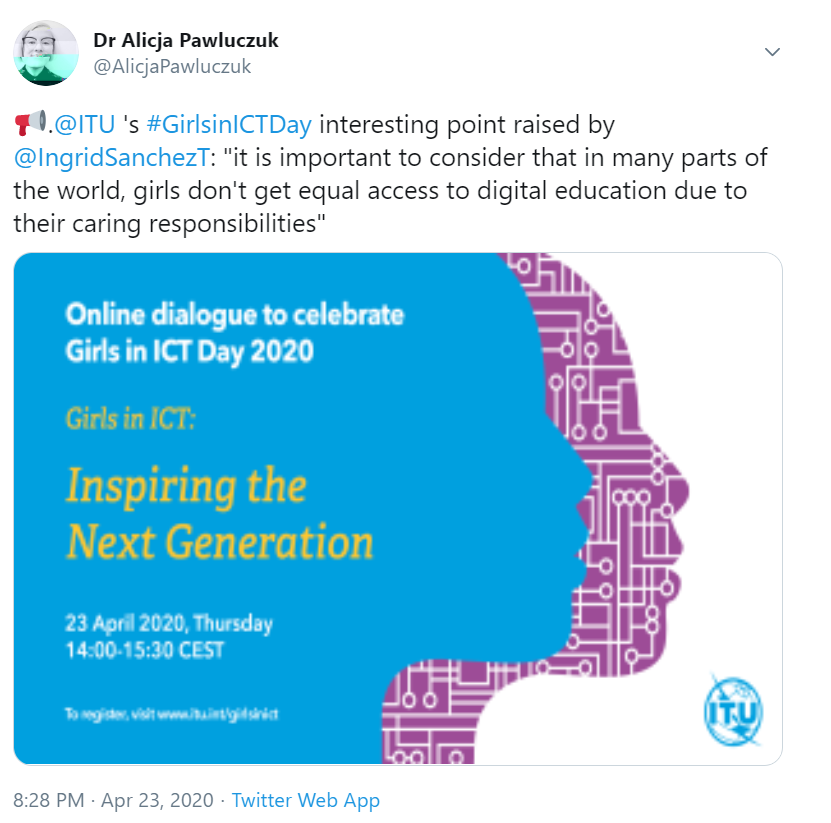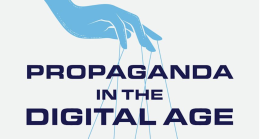Despite progress in gender equality and women’s empowerment, women's access to, use of, and benefits from digital technologies are limited due to economic, social, and cultural obstacles. For example, a girl growing up in Africa is 23% less likely to be online than her male counterparts. Young women in South Asia are 27% less likely to own a mobile phone. Globally, there are 250 million fewer women online than men.
The importance of girls’ and women’s proactive and meaningful digital participation is particularly key in the context of the ongoing COVID-19 pandemic. In many developing countries, social distancing coupled with lack of computer access can mean prolonged gaps in education. In addition, limited access to online information could also have a significant impact on everyday decision-making and, consequently, the futures of girls. While many tech-based tools and apps have offered temporary relief to COVID-19 restrictions, they have also exacerbated the existing digital divides.
The COVID-19 crisis certainly brings important lessons about the multi-layered nature of the digital divide, but what should we know specifically about its impact on girls? This year’s ITU initiative “Girls in ICT Day Inspiring the Next Generation” has proved a timely opportunity to explore this question while engaging with female voices from all over the world. “Girls in ICT Day” is an annual celebration, (this year on 23rd of April), which aims to raise awareness about the importance of encouraging and supporting girls to consider studies and careers in ICT.
The key message from the day was clear: girls’ digital participation has indeed been disproportionately affected by the pandemic. Social distancing measures exacerbate many girls’ limited access to digital technologies, resulting in fewer opportunities to participate in online learning, to stay connected to friends and support services (e.g. sexual and reproductive health, domestic violence), and to use digital technologies for self-expression and leisure. As Doreen Bogdan-Martin, Director of the ITU Telecommunication Development Bureau, argued, “with school, work, commerce and daily life moving online due to #COVID19, we must quickly find ways to make sure girls and women aren’t left behind.”

Making sure that girls are not left behind requires deliberate planning. Some strategies for inclusion were explored during the #GirlsInICT EQUALS’ Twitter chat. Examples of best practices (tweets tagged with #GenderTechImpact) can be summarised as these recommendations: (1) provide girls with opportunities where digital skills and tools can be explored and demystified (e.g. addressing stereotypes that careers in digital technologies are for men only); (2) provide access to safe, judgment-free, and hands-on digital training; (3) ensure that girls have access to sustainable digital support and mentorship.
Looking into the future, it is also crucial to know how to best evaluate the impact of girls’ digital inclusion practice. To have a critical understanding of girls' digital needs, we need to produce meaningful evaluation insights about what works and what does not work when engaging girls in ICT. To achieve this, it is useful to consider the following questions: What are some of the advantages and disadvantages of the existing evaluation methods used in girls’ digital inclusion programmes? And, to what extent can we collectively improve our evaluation practice, so it produces knowledge that could truly shape future digital inclusion strategies?
#GirlsinICT day has proved that while working towards bridging the gender digital divide is important work, it is not without challenges, especially in the context of the COVID-19 crisis. However, the digital inclusion community remains to be resilient and ambitious in its efforts to empower girls in ICT.
Suggested citation: Alicja Pawluczuk., "#GirlsInICT: Looking into the Post COVID-19 Future of Girls' Digital Inclusion," UNU Macau (blog), 2020-05-08, https://unu.edu/macau/blog-post/girlsinict-looking-post-covid-19-future-girls-digital-inclusion.




